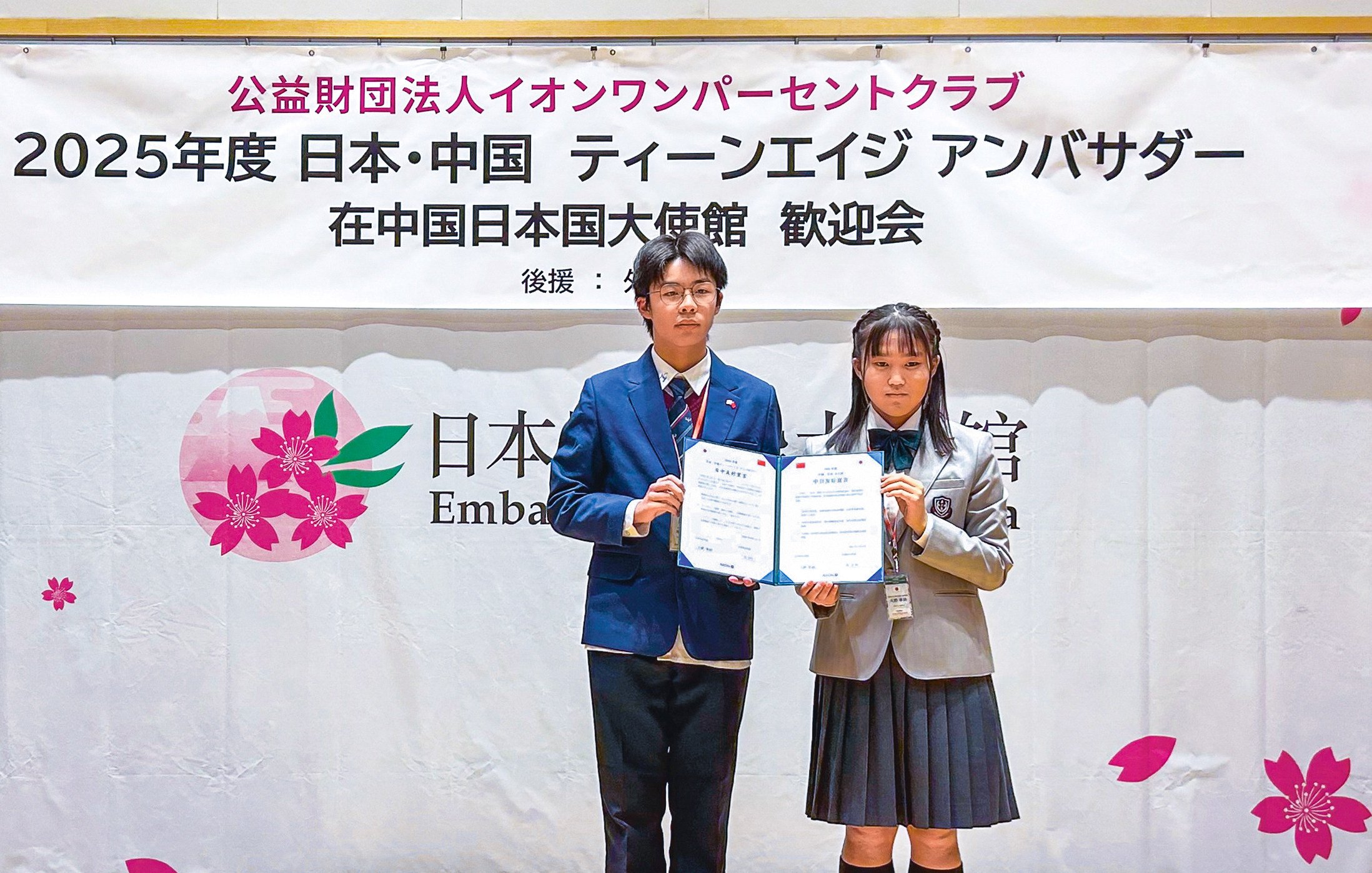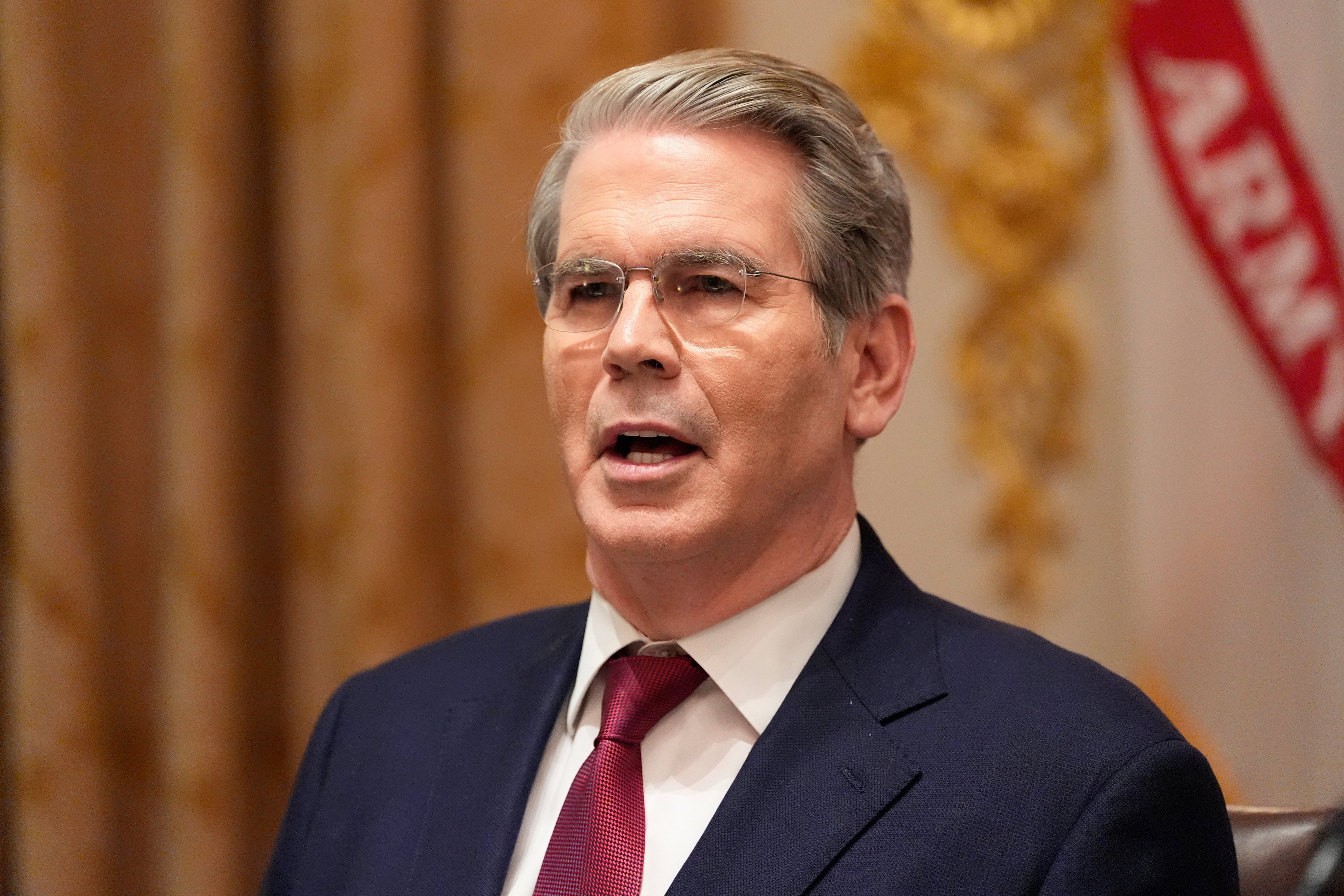
China and Japan look to younger generation as bridge over troubled waters
Officials from China and Japan are hoping closer bonds between younger generations can help stabilise their turbulent relationship, which faces challenges from issues ranging from wartime history to the impact of Donald Trump’s policies. In December last year, the two countries’ foreign ministers agreed to promote youth exchanges as a way of improving relations between their respective populations, including a five-year plan for educational exchanges between high schools and universities. As part of these efforts, 40 Japanese high school pupils visited Beijing last week under the Japan-China Teenage Ambassador programme. They were joined by 40 of their Chinese counterparts for meetings with Japanese diplomats and Chinese officials. “Personally, I would say I like China, but I’ve heard many negative biases about China,” Mahiro Imai, 16, from Tokyo, said during an event at the Japanese embassy on Tuesday. She said World War II ended 80 years ago but she had been worried to see “the news of China … releasing so many movies about the war”. Mahiro added that people were saying “there were really strong opinions” against Japan in China, but her family had agreed she should still go ahead with the visit. She said she had already seen a different side to China, adding: “When I watched the news about China, they were talking about air pollution or like rubbish on the street. “But then I came here and I was impressed by how clean the city is and how wide the road is.” The trip coincided with a historic moment in Japan, with Sanae Takaichi, a China hawk, becoming the country’s first woman prime minister. This may cause concern in Beijing, given Takaichi’s views on wartime history and Taiwan as well as her calls to revise the post-war pacifist constitution and strengthen ties with democratic partners. On Friday, she pledged to raise Japan’s defence budget to 2 per cent of gross domestic product by March, two years earlier than the present target. She described China as an “important neighbour” and expressed her hope for a “strategic and mutually beneficial” relationship, but she warned that Beijing’s “military activities”, as well as those of North Korea and Russia, “have become a grave concern”. Meanwhile, she said the alliance with the United States was the “cornerstone” of Japan’s diplomatic and security policies, and she wanted to bring the relationship to “new heights”. All these may make policymakers in Beijing uneasy and could be a further source of tension at a time when relations are already under strain from issues such as the long-running territorial disputes in the East China Sea, Beijing’s rapid acceleration of military activities in the region and the alliance between Japan and the US. But what worries many is that public attitudes in both countries appear to be souring. According to the annual Japan-China Joint Public Opinion Poll released in December, 87.7 per cent of Chinese respondents said they had a negative impression of Japan, the second highest since the survey began in 2005. Meanwhile, 89 per cent of Japanese respondents in the survey, carried out by China International Communications Group and Japan’s Genron NPO, said they had an unfavourable impression of China. This year marks the 80th anniversary of Japan’s defeat in World War II, and to commemorate the event China staged a massive military parade in Beijing featuring an array of hi-tech weapons. The anniversary was also marked by a number of big-budget films about Japan’s invasion of China and some of its most notorious atrocities, including the 1937 Nanjing massacre and Unit 731, a covert biological and chemical weapons programme that carried out human experiments on prisoners. The Japanese foreign ministry has warned its citizens to be on alert for heightened anti-Japanese sentiment as a result of the anniversary. The warning followed a series of attacks on Japanese citizens in the past year. A Chinese woman was killed in June of last year while trying to protect a Japanese mother and child from a knifeman in Suzhou, while a 10-year-old boy was killed near the Japanese school in Shenzhen almost three months later. But despite the often tense relationship between the two countries, leaders and politicians have called for stronger bonds between younger generations. Last December’s meeting to discuss people-to-people and cultural exchanges between Chinese Foreign Minister Wang Yi and his then Japanese counterpart Takeshi Iwaya resulted in a pledge to implement a five-year plan for educational exchanges. In a 10-point agreement, the two sides also “confirmed the importance of youth exchanges in promoting mutual understanding among young people … that will contribute to the stabilisation of Japan-China relations over the medium to long term”, according to the Japanese foreign ministry. Speaking at the reception in Beijing on Tuesday, Kenji Kanasugi, the Japanese ambassador, said students could become “bridges between Japan and China”. “I believe all of you have already noticed various differences between Japan and China, and even just from a bus, you must have observed the contrasts in urban landscapes and traffic conditions,” he told the event, attended by school pupils from both countries and local Beijing officials. “I hope that each of you, as ‘little ambassadors’ will also widely share your experiences and personal feelings from this exchange programme. I strongly hope that you will become bridges between Japan and China.” The teenage ambassadors programme, which organises exchanges between Japan and 15 other countries, is funded by the AEON 1% Club Foundation, which receives 1 per cent of the retailer’s pre-tax profits. Hiroyuki Watanabe, the chairman of the foundation, said it was crucial to cultivate mutual understanding, especially among younger generations. “The younger a person is, the more important it is for them, because at the high school age, when they are quite young, their sensitivity to everything is particularly strong and if they can use their own perceptions to deepen mutual understanding, it will be an extremely positive thing,” he said. “While it’s true there are certain media reports, and you might see related information online, I still believe that experiencing the actual situation first-hand through personal observations is what matters most.” In July, 40 Chinese high school pupils from Changsha in Hunan province and Beijing visited Tokyo and Sapporo in Japan under the same programme. Xu Xiaoyi, 16, from Changsha, was one of 40 Chinese students who took part in the exchange, which included a two-day homestay with local families and a visit to the embassy in Tokyo. Unlike many of her friends who are fans of Japanese animation and comics, Xiaoyi said one thing she was most interested in was Japan’s efficient home waste sorting system “and how the Japanese can keep the streets so clean that there’s not even a single leaf”. She said she had also been struck by some cultural differences, for example when a local guide told them not to eat on the street because “the Japanese consider it as something very private while in China nobody really cares”. She added: “I think this is one of the differences that we can’t say which is good or bad, but it’s interesting to understand such differences.” Xiaoyi also said she was glad to experience the real Japan. “I am quite neutral, and I believe that we should not forget history, but we should not deny that there are aspects where they have done better than us, and we should learn from each other,” she said. “I think now I have a more vivid understanding of Japan.” Mahiro, from Tokyo, expressed similar sentiments. She said she had already fulfilled one of her wishes by getting to try Peking duck on the first day of her visit, and was looking forward to visiting a school in Beijing and possibly attending a class. “I would think it’s going to be so cool. I guess school is going to be different, like the building,” she said. “They told me that we’re going to take one class and maybe it’s going to be maths. I’m not good at maths so I’m really nervous, but [it will be] interesting and I think it’s going to be so cool.”
